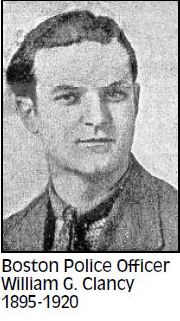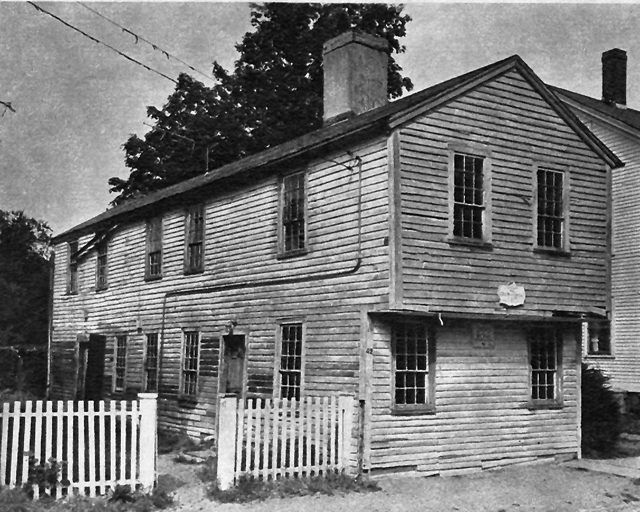"The First American Who Put The Stars and Stripes on the Battlefield"
"When a police officer is killed, it's not an agency that loses an officer, it's an entire nation." -Chris Cosgriff, ODMP Founder
Patrolman William G. Clancy
Boston Police Department, Massachusetts
End of Watch: Thursday, January 22, 1920
Age: 25
Harold Bowen wrote that William G. Clancy grew up in this house. He enlisted early (1914) in World War I in the Royal Field Artillery of the Foreign Legion in England. He was wounded in the battle of Loose, and again at the battle of Somme. On April 9, 1917 Clancy went over Vimy Ridge with a small American flag attached to his bayonet, and four days later was seriously injured when a German shell exploded near him. His charge was recognized as the first appearance of the U.S. flag in action during the war. He went back to the battlefields in France, survived, and returned to the U.S. in 1919. He took a job that year with the Boston police force and was shot and killed two months later by an armed young man at a dance in Charlestown. Clancy was laid to rest at Highland Cemetery with full military honors.
In the Publications of the Ipswich Historical Society we read the following:
STORY OF WILLIAM CLANCY
"Ipswich pride was stirred by the story that found place in London papers and in the New York Sunday magazines that William Clancy, Boston born but a resident in Ipswich since he was three years old, who had enlisted in the English Army, claimed to be the first American to carry the Stars and Stripes into action. On April 1917, at the famous battle of Vimy Ridge, in a charge on the enemy, he had fastened a small American flag on his bayonet. He was severely wounded, and while in an English hospital his story became known, and a picture in a London paper showed him in the act of being congratulated by the American Ambassador, Mr. Walter Hines Page, in the presence "of his fellow soldiers."
"The First American Who Put The Stars and Stripes on the Battlefield"
"When a police officer is killed, it's not an agency that loses an officer, it's an entire nation." -Chris Cosgriff, ODMP Founder
Patrolman William G. Clancy
Boston Police Department, Massachusetts
End of Watch: Thursday, January 22, 1920
Age: 25
Harold Bowen wrote that William G. Clancy grew up in this house. He enlisted early (1914) in World War I in the Royal Field Artillery of the Foreign Legion in England. He was wounded in the battle of Loose, and again at the battle of Somme. On April 9, 1917 Clancy went over Vimy Ridge with a small American flag attached to his bayonet, and four days later was seriously injured when a German shell exploded near him. His charge was recognized as the first appearance of the U.S. flag in action during the war. He went back to the battlefields in France, survived, and returned to the U.S. in 1919. He took a job that year with the Boston police force and was shot and killed two months later by an armed young man at a dance in Charlestown. Clancy was laid to rest at Highland Cemetery with full military honors.
In the Publications of the Ipswich Historical Society we read the following:
STORY OF WILLIAM CLANCY
"Ipswich pride was stirred by the story that found place in London papers and in the New York Sunday magazines that William Clancy, Boston born but a resident in Ipswich since he was three years old, who had enlisted in the English Army, claimed to be the first American to carry the Stars and Stripes into action. On April 1917, at the famous battle of Vimy Ridge, in a charge on the enemy, he had fastened a small American flag on his bayonet. He was severely wounded, and while in an English hospital his story became known, and a picture in a London paper showed him in the act of being congratulated by the American Ambassador, Mr. Walter Hines Page, in the presence "of his fellow soldiers."



















